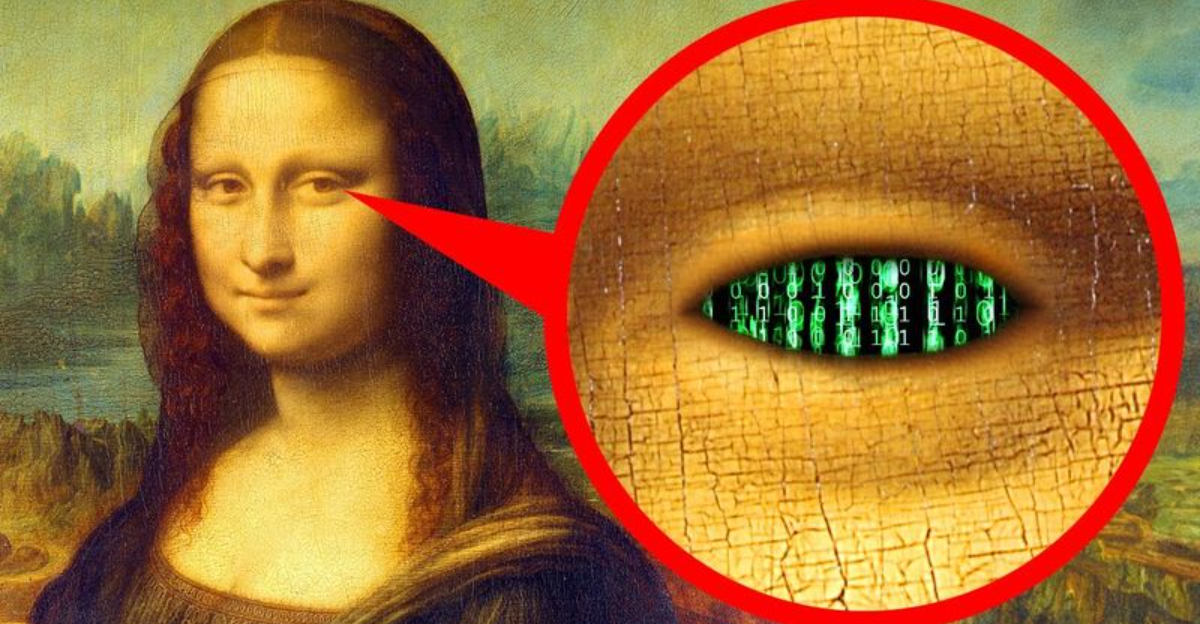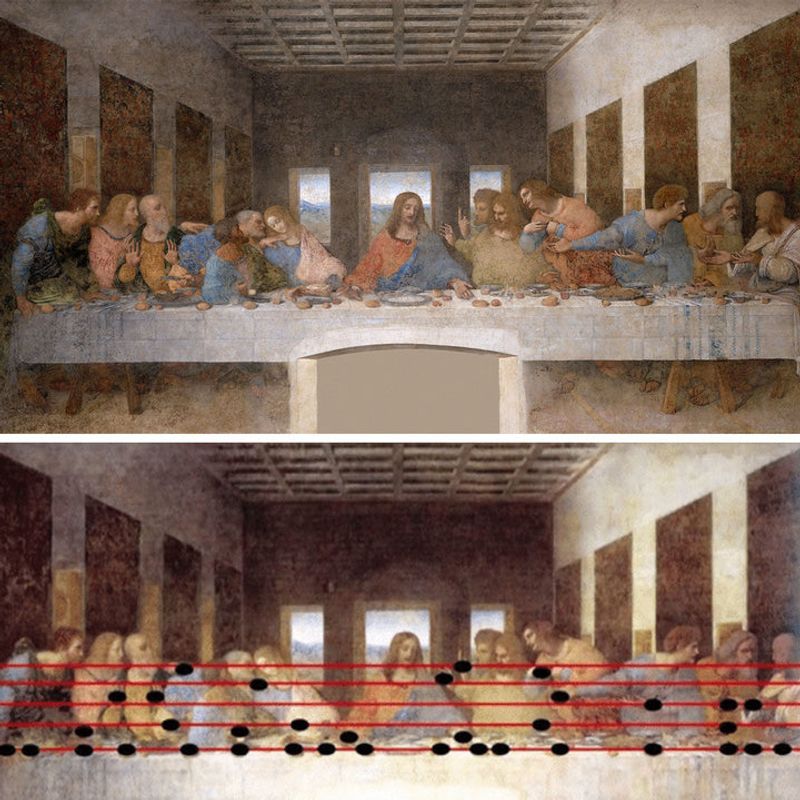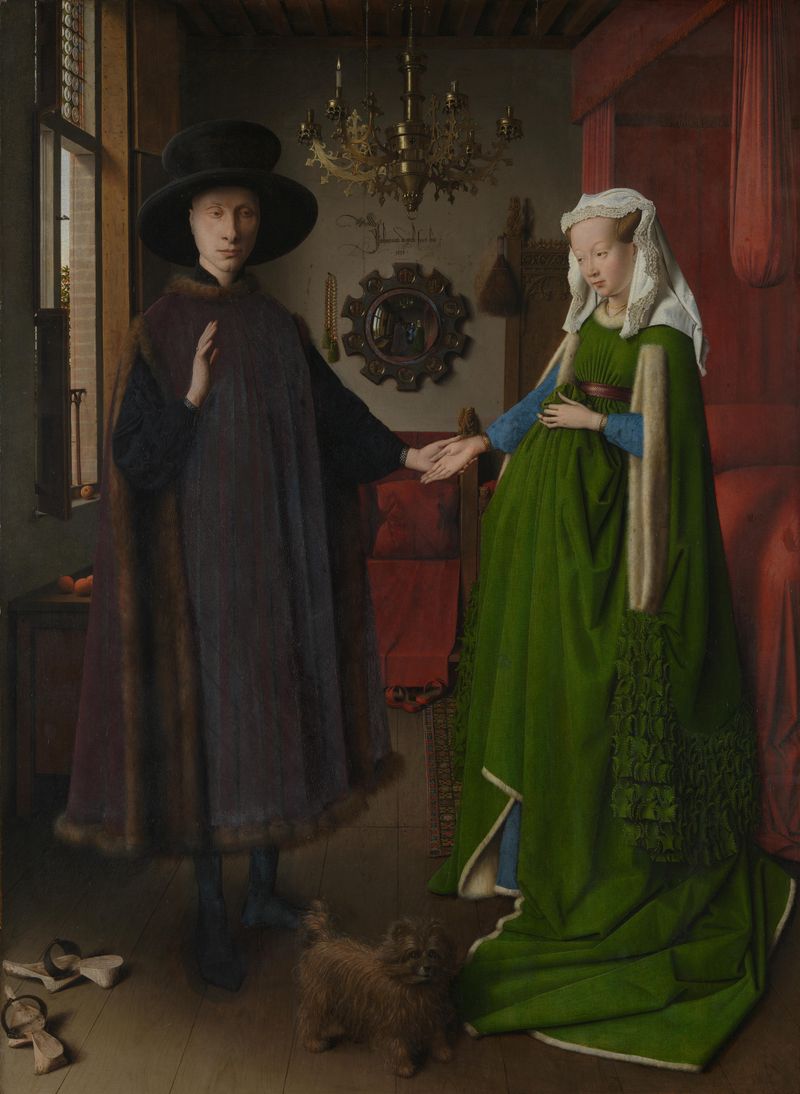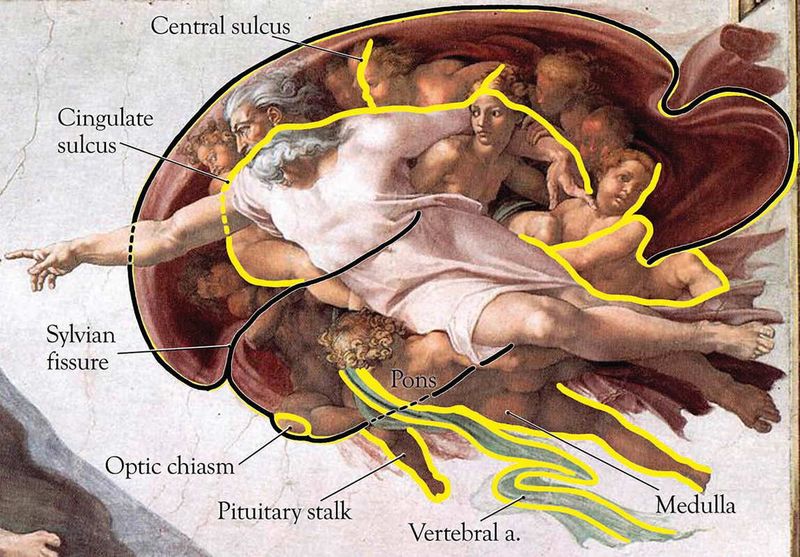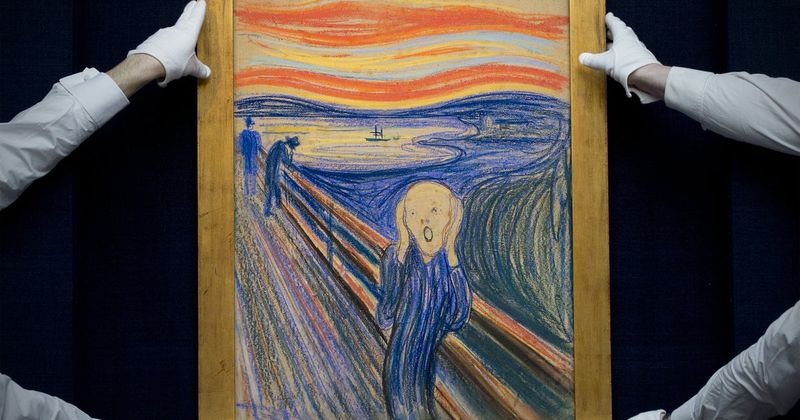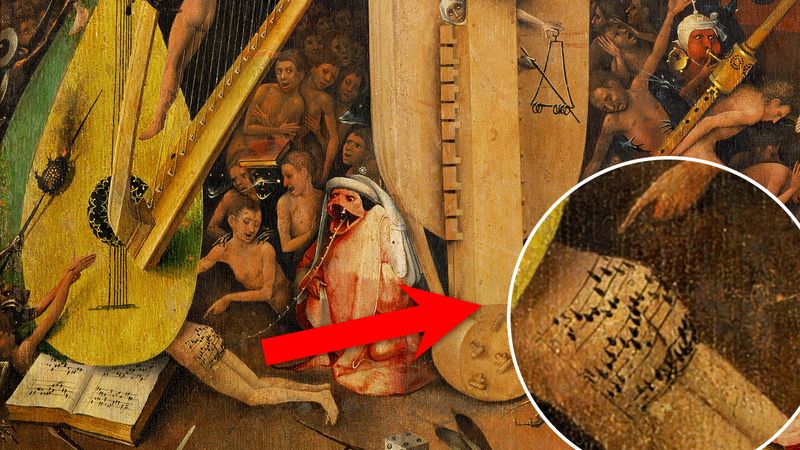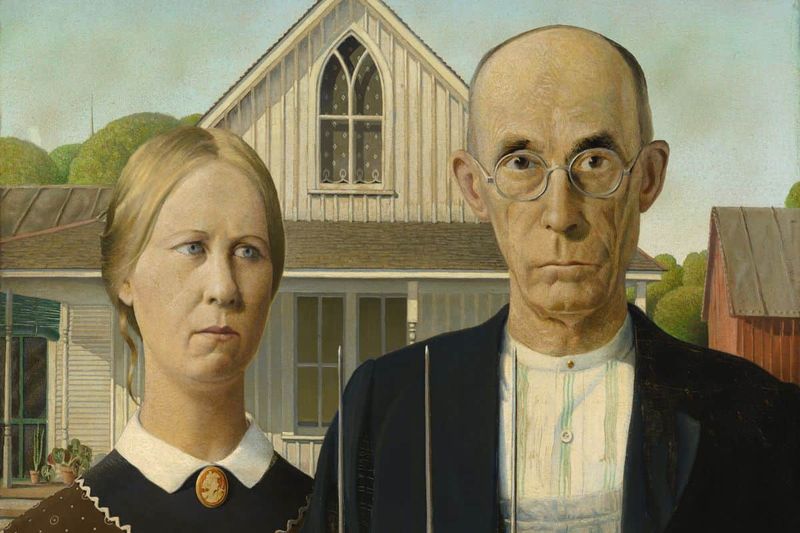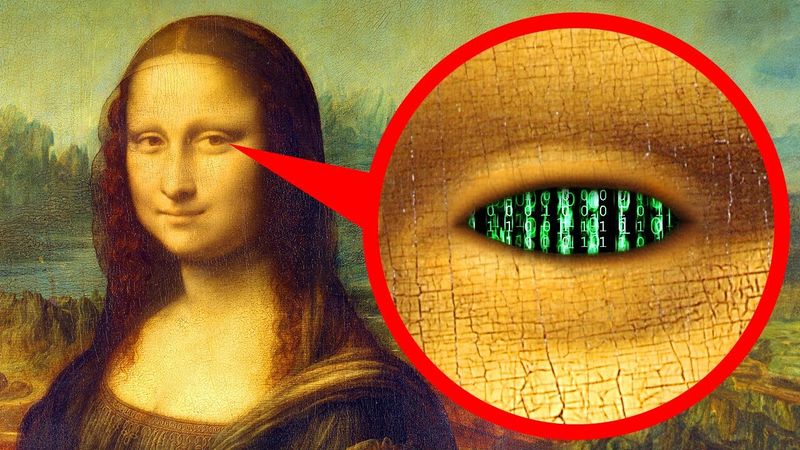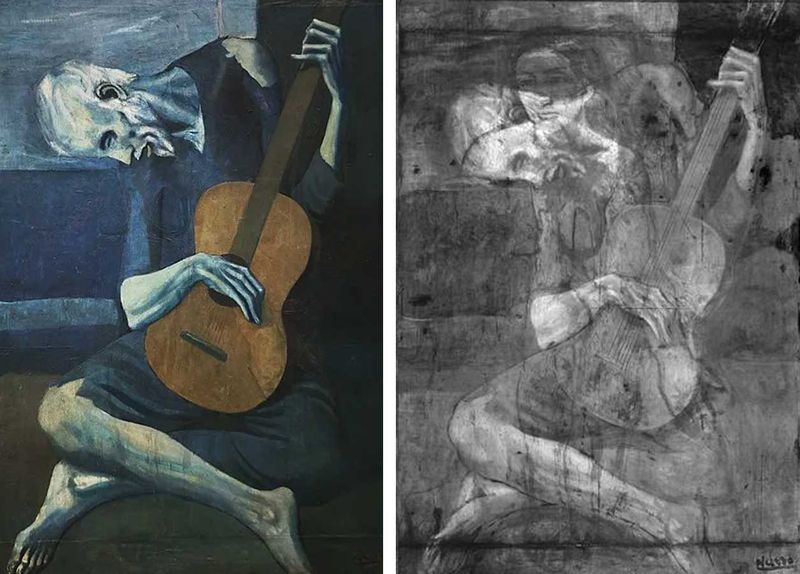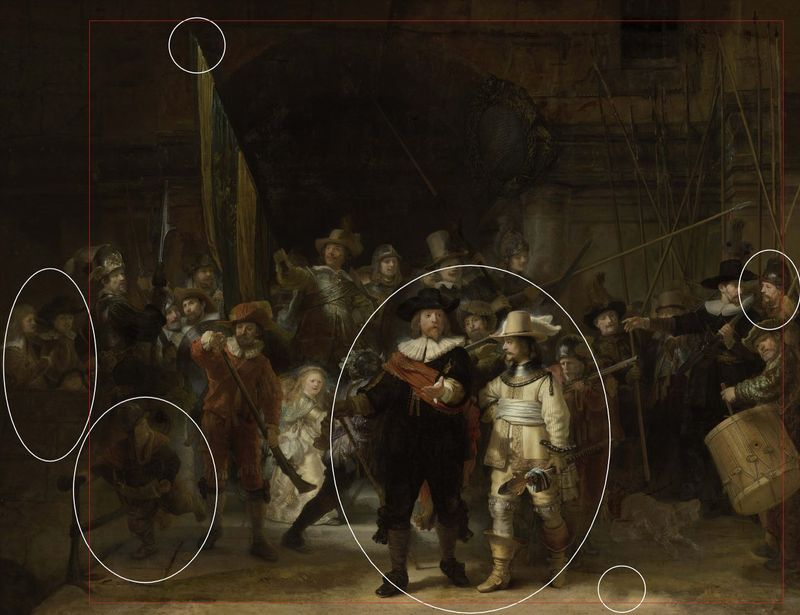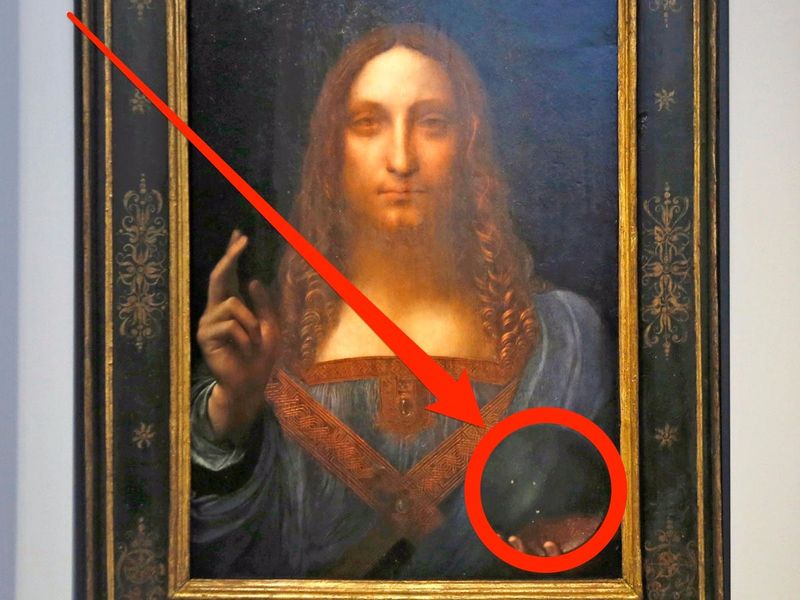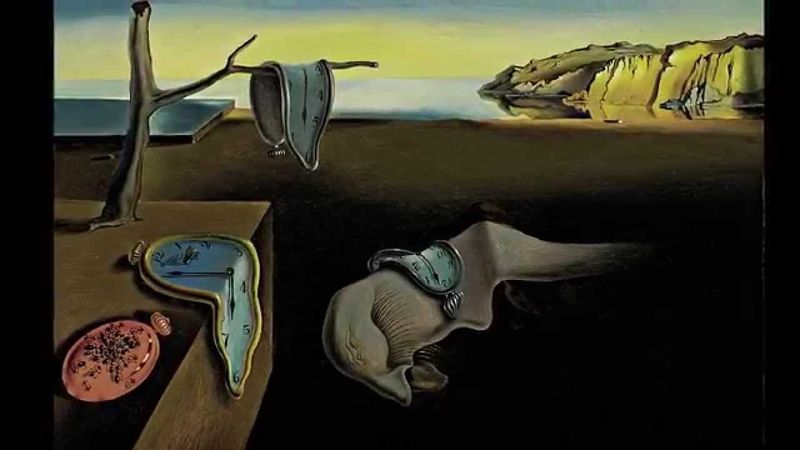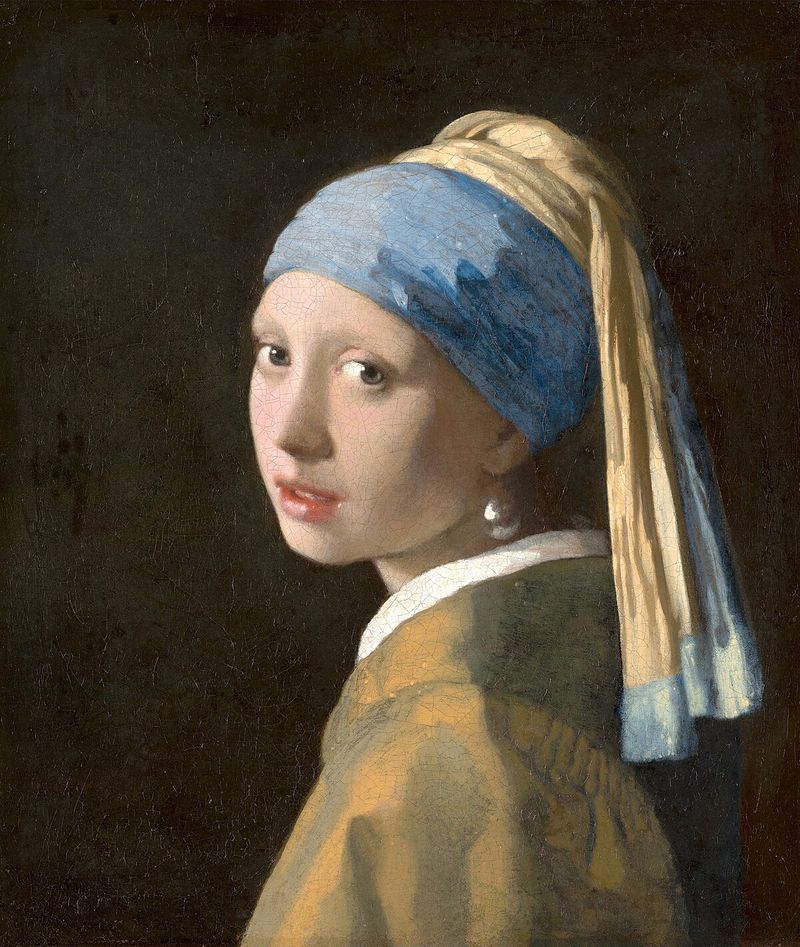Throughout history, many renowned paintings have contained secret messages that went unnoticed for centuries. These hidden elements, whether intentional or accidental, often hold fascinating insights into the artist’s mind or the cultural context of the time. Here, we explore twelve famous paintings that harbor secrets, offering a glimpse into the mysteries that lie beneath the paint.
1. The Last Supper’s Musical Code (Leonardo da Vinci, 1495–1498)
An Italian musician discovered a unique melody within Leonardo da Vinci’s iconic Last Supper. By overlaying a musical staff on the painting, the positions of bread and hands form notes of a 40-second hymn. This find suggests da Vinci may have embedded a secret composition, merging art with music. The blend of visual and auditory elements reveals da Vinci’s multifaceted genius, bridging two artistic realms. It’s a melody hidden in plain sight, waiting to be played. An innovative way to intertwine creative expressions.
2. The Arnolfini Portrait’s Mirror Trick (Jan van Eyck, 1434)
Jan van Eyck’s The Arnolfini Portrait holds a clever optical illusion. The convex mirror in the background reflects two mysterious figures, possibly marriage witnesses. Above it, van Eyck’s signature reads “Jan van Eyck was here,” as though he attended the event. This painting challenges viewers to look beyond the obvious, revealing layers of depth and intrigue. The mirror’s reflection teases the viewer with its hidden narrative, making one ponder who truly witnessed the portrayed scene. It’s a subtle masterpiece of observation and detail.
3. The Sistine Chapel’s Hidden Brain (Michelangelo, 1508–1512)
Michelangelo’s The Creation of Adam contains a hidden anatomical secret. The shape enveloping God and the angels resembles a human brain, possibly indicating Michelangelo’s anatomical studies. This discovery suggests that the artist may have encoded his knowledge of human biology within the divine fresco. Was this a statement about the connection between divinity and human intellect? Michelangelo’s blend of art and science invites viewers to explore deeper meanings. It’s a cerebral riddle wrapped in breathtaking art, leaving much to ponder.
4. The Scream’s Mysterious Inscription (Edvard Munch, 1893)
Edvard Munch’s The Scream holds a cryptic message. A faint inscription reads: “Could only have been painted by a madman!” It’s believed Munch added the note after critics questioned his mental stability. This hidden message adds depth to the painting, reflecting the intense emotions conveyed. The words offer insight into Munch’s mindset, adding a layer of personal reflection. Rather than a simple image of despair, The Scream becomes a self-aware commentary on art and perception, bridging personal and public interpretations.
5. The Garden of Earthly Delights’ Musical Butt (Hieronymus Bosch, 1490–1510)
Hieronymus Bosch’s The Garden of Earthly Delights conceals a quirky musical secret. In the right panel, a sinner’s posterior features sheet music. When played, this medieval tune comes alive, adding a whimsical layer to the chaotic scene. Bosch’s integration of music and imagery creates a multifaceted experience, blending surrealism with sound. The unexpected harmony offers a playful twist to the depiction of hell, engaging viewers in a unique artistic dialogue. It’s a tune hidden in an unlikely place, inviting exploration of Bosch’s inventive world.
6. American Gothic’s Hidden Portrait (Grant Wood, 1930)
Grant Wood’s American Gothic carries a concealed story beneath its surface. X-rays reveal the farmer’s daughter once bore a defiant look, softening only later. Was this to evade controversy? The change alters the painting’s dynamic, adding complexity to the relationship depicted. Wood’s careful adjustment reflects the social nuances of the era, portraying subtle tension and compliance. It’s a glimpse into the artist’s process, revealing evolving intentions and societal influences. The hidden expression transforms an iconic image, offering fresh perspectives on familiar faces.
7. The Mona Lisa’s Hidden Symbols (Leonardo da Vinci, 1503–1519)
The enigmatic smile of the Mona Lisa has captivated audiences for centuries, but there’s more under the surface. Infrared scans have uncovered preliminary sketches, including a hairpin and smile alterations. Some theorists suggest the backdrop conceals letters and numbers, hinting at a coded message. This has fueled speculation about da Vinci’s intentions, adding an extra layer of intrigue to the artwork. Could the Mona Lisa’s background hold secrets only da Vinci knew? A masterpiece shrouded in mystery, it invites endless interpretation and fascination.
8. The Old Guitarist’s Ghostly Woman (Pablo Picasso, 1903–1904)
Beneath The Old Guitarist by Pablo Picasso lies a forgotten face. Infrared imaging uncovers a hidden portrait of a woman, perhaps a lost love from Picasso’s “Blue Period.” This layered composition adds emotional depth, intertwining past and present in melancholic harmony. It reflects the artist’s emotional journey, capturing personal loss and artistic evolution. The ghostly presence beneath the surface enriches the painting’s narrative, offering a glimpse of the inner world of an iconic artist. It’s a dialogue between visible and unseen, a testament to Picasso’s enduring legacy.
9. The Night Watch’s Missing Piece (Rembrandt, 1642)
Rembrandt’s The Night Watch holds untold stories. In 1715, it was trimmed to fit a new location, losing sections and two figures. Rediscovered sketches reveal these missing components, altering the painting’s meaning. This loss and recovery highlight the artwork’s dynamic history and offer new insights into Rembrandt’s vision. The missing elements change the scene’s balance, infusing the familiar masterpiece with fresh interpretations. It’s an evolving narrative, shaped by time and circumstance, reflecting the enduring impact of art across centuries.
10. Salvator Mundi’s Crystal Ball Error (Attributed to Leonardo da Vinci, c. 1500)
Salvator Mundi, attributed to Leonardo da Vinci, presents a curious anomaly. The crystal orb in Christ’s hand fails to refract light correctly, a puzzling error for a scientific mind. Some interpret it as a deliberate choice, symbolizing Christ’s transcendence over natural laws. This intriguing detail invites speculation about da Vinci’s intentions, blending faith and science. The orb’s peculiar depiction challenges perceptions, adding a mystical twist to the serene image. It’s a small but significant enigma, merging artistry with philosophical questions.
11. The Persistence of Memory’s Hidden Self-Portrait (Salvador Dalí, 1931)
Salvador Dalí’s The Persistence of Memory features more than melting clocks. The central, distorted figure is thought to be a self-portrait, reflecting Dalí’s whimsical exploration of identity. This surreal element adds depth, blending reality with imagination. Dalí’s unique vision invites viewers to question time and existence, creating a dreamlike landscape. Through this hidden portrayal, Dalí injects personal narrative into his work, transforming the bizarre into the autobiographical. It’s an exploration of self within a fluid universe, challenging conventional artistic norms.
12. Girl with a Pearl Earring’s Missing Earring (Johannes Vermeer, 1665)
The iconic Girl with a Pearl Earring by Johannes Vermeer holds a shimmering illusion. The so-called “pearl” is not a pearl at all but rather a glass varnish trick without clasp or string. This clever deception raises questions about symbolism, purity, and reality. Vermeer’s skillful technique transforms a simple adornment into a profound statement. The missing earring becomes an enigma, challenging perceptions and inviting speculation. It’s a delicate balance of beauty and mystery, capturing the imagination with its subtle, artistic sleight of hand.
